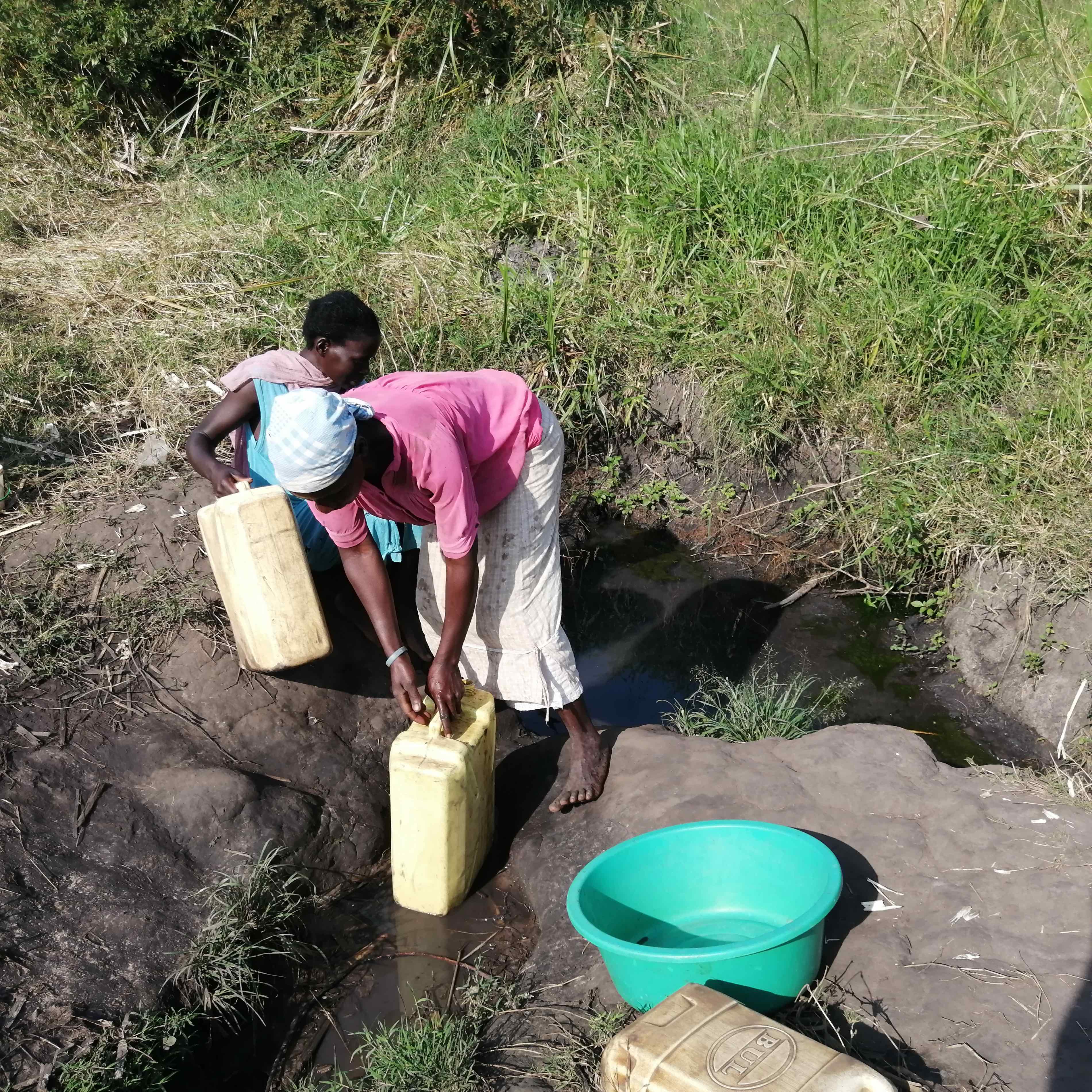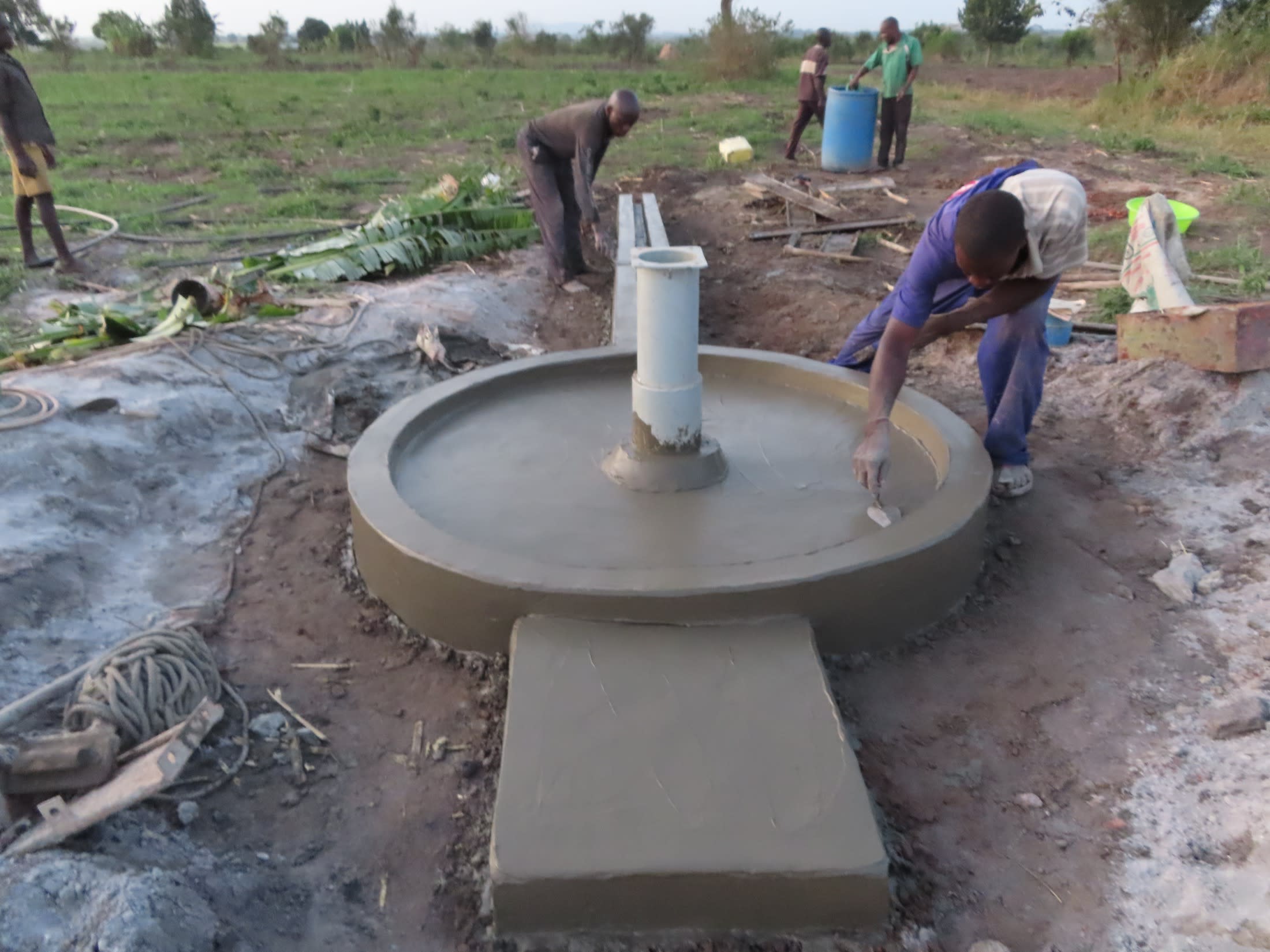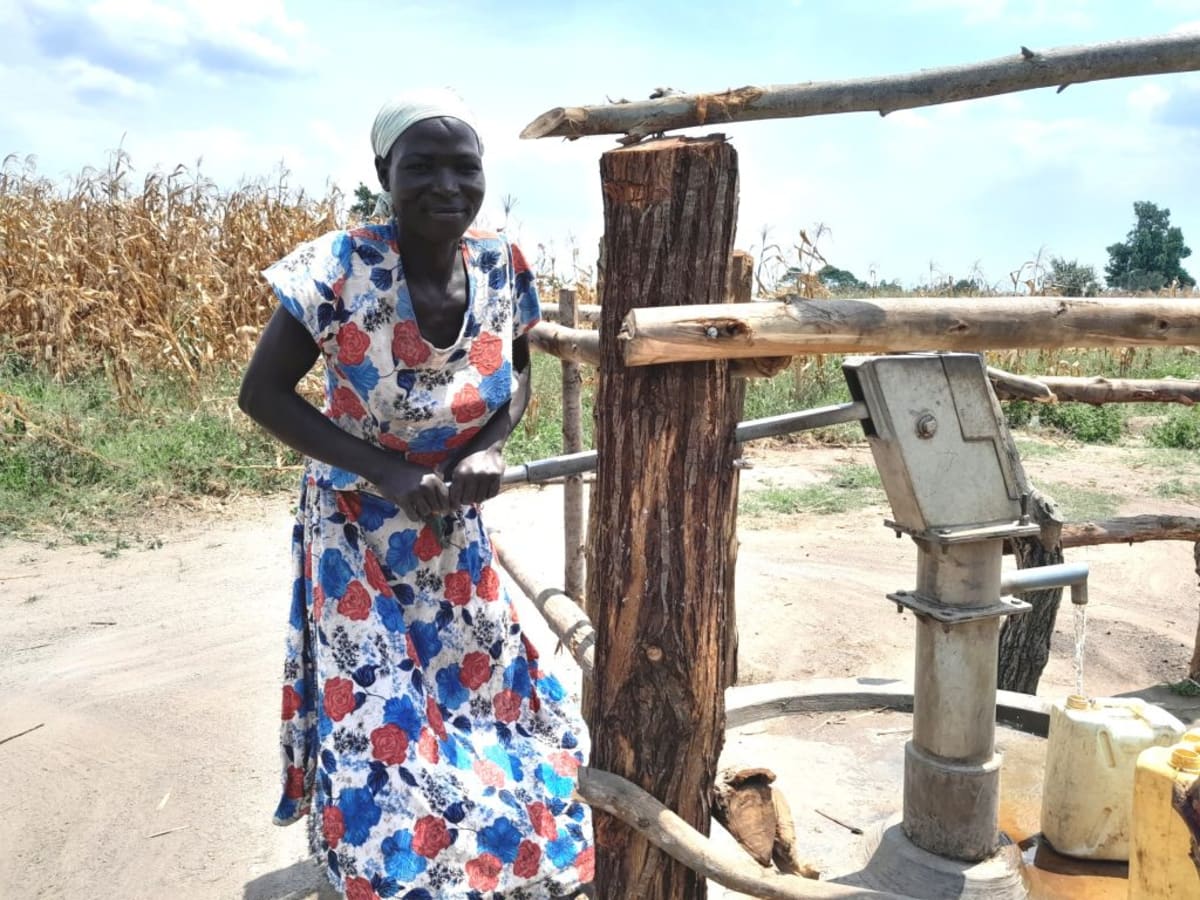Rwensororo Village has only one water point situated over three kilometers away: at least a half-hour walk each way for the village's 586 people.

Due to the long distance, community members sometimes opt for open water sources and scoopholes to access water for domestic purposes. These water sources are shared with animals and snakes, which is very risky to access, especially for children. These makeshift sources also tend to dry up during drought seasons.
The reported health consequences of using these water sources are stomach aches, headaches, and skin disorders. The children look malnourished. But Rwensororo's people have no better options.

This community is made up of casual labor migrants from the West Nile region of Uganda. They are isolated, never having received any government intervention or help. There are no nearby facilities like schools or churches.
Alima, a widow and a mother of six children, was asked how the current situation affects her. She is pictured below fetching water. "Due to the long distance we have to walk to collect water, there is a lot of delays and time wasted, which has led to higher levels of domestic violence within the community. When we send the children to collect water, sometimes they refuse to go due to the long distance they have to walk."

A 13-year-old boy named Shafik told us that his main role at home is to collect water. "The challenges I have encountered are the long distances I have to walk to the water source, congestion where we children are denied access before the elder ones, and, above all, sometimes I am forcefully sent to collect water even when I am sick."
We need to provide access to safe and clean water in this community. This will motivate the community to improve on their sanitation and hygiene practices and reduce the long distances they move to access drinking water.
Here’s what we’re going to do about it:
New Borehole
This new borehole is an exciting opportunity for this community! We work with the community to determine the best possible sites for this well.
We conducted a hydrogeological survey and the results indicated the water table is an ideal candidate for a borehole well. Due to a borehole well's unique ability to tap into a safe, year-round water column, it will be poised to serve all of the water needs for this community, even through the dry months.
Community members will help collect the needed construction materials such as sand, rocks, and water for mixing cement. They will also provide housing and meals for the work team, in addition to providing local laborers. We will complement their materials by providing an expert team of artisans and drilling professionals, tools, hardware, and the hand-pump. Once finished, water from the well will then be used by community members for drinking, handwashing, cooking, cleaning, and much more.
Training
Training’s main objectives are the use of latrines and observing proper hygiene practices since these goals are inherently connected to the provision of clean water. Open defecation, water storage in unclean containers and the absence of hand-washing are all possible contaminants of a household water supply. Each participating village must achieve Open Defecation Free status (defined by one latrine per household) prior to the pump installation for this borehole well.
This social program includes the assignment of one Community Development Officer (CDO) to each village. The CDO encourages each household to build an ideal homestead that includes: a latrine, a handwashing facility, a separate structure for animals, a rubbish pit and a drying rack for dishes.
We also implement the Community-Led Total Sanitation (CLTS) approach with each of our village partners. This aims to improve the sanitation and hygiene practices and behaviors of a village. During these sessions, village leaders naturally emerge and push the community to realize that the current practices of individual households – particularly the practice of open defecation – are not only unhealthy, but affect the entire village. CLTS facilitates a process in which community members realize the negative consequences of their current water, sanitation and hygiene behaviors and are inspired to take action. Group interactions are frequent motivators for individual households to build latrines, use them, and demand that other households do the same.
Improved Sanitation
The aim is that all households own an improved latrine. Many households do not use a latrine but use the bush. Due to open defecation, feces are spread all over the village. This leads to waterborne diseases and contamination of groundwater and surface water. Our aim is that the community is able to live a healthy life free of preventable diseases. We endeavor that at the end of our presence in the community, people will have both access to sustainable, clean water and access to sanitation. We have now organized families to form digging groups for latrine construction, and empowered them with tools to use.

 Borehole Well and Hand Pump
Borehole Well and Hand Pump
 Rehabilitation Project
Rehabilitation Project



























